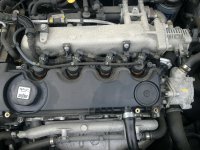my car has developed a judder at 1500rpm. (its a 1.9 JTD 115).
Theres nothing that ive noticed while im driving but if im idleing in neutral and slowly rev up to 1.5K, only at this point does the engine judder. It just shakes much more noticabley and isnt as smooth. Once i increase the revs further it goes away and is as smooth as usual.
when i bought the car the overboost kept failing (and the turbo would drop out) because it was clogged up, it was cleaned out and never been a problem since.
I also recently, in the summer removed my throttle body and egr and thouroughly cleaned those. I also replaced the map sensor.
The oil was changed in october and the car was serviced less than a year ago.
The only engine mod is a cone filter.
Any suggestion to why this is occruing? My thoughts at the moment are that this is arround the rpm when the turbo has spooled up so im thinking either a problem is resurfacing with the over boost valve (still in its original possition) or posibley dirty injectors? like theres a stutter because the fuel requirements arnt being meant that are demanded by the sudden increase in air?
any thoughts would be much appreciated,
cheers
Stu
Theres nothing that ive noticed while im driving but if im idleing in neutral and slowly rev up to 1.5K, only at this point does the engine judder. It just shakes much more noticabley and isnt as smooth. Once i increase the revs further it goes away and is as smooth as usual.
when i bought the car the overboost kept failing (and the turbo would drop out) because it was clogged up, it was cleaned out and never been a problem since.
I also recently, in the summer removed my throttle body and egr and thouroughly cleaned those. I also replaced the map sensor.
The oil was changed in october and the car was serviced less than a year ago.
The only engine mod is a cone filter.
Any suggestion to why this is occruing? My thoughts at the moment are that this is arround the rpm when the turbo has spooled up so im thinking either a problem is resurfacing with the over boost valve (still in its original possition) or posibley dirty injectors? like theres a stutter because the fuel requirements arnt being meant that are demanded by the sudden increase in air?
any thoughts would be much appreciated,
cheers
Stu
Last edited:


